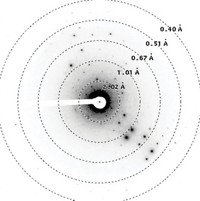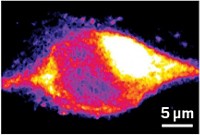Advertisement
Grab your lab coat. Let's get started
Welcome!
Welcome!
Create an account below to get 6 C&EN articles per month, receive newsletters and more - all free.
It seems this is your first time logging in online. Please enter the following information to continue.
As an ACS member you automatically get access to this site. All we need is few more details to create your reading experience.
Not you? Sign in with a different account.
Not you? Sign in with a different account.
ERROR 1
ERROR 1
ERROR 2
ERROR 2
ERROR 2
ERROR 2
ERROR 2
Password and Confirm password must match.
If you have an ACS member number, please enter it here so we can link this account to your membership. (optional)
ERROR 2
ACS values your privacy. By submitting your information, you are gaining access to C&EN and subscribing to our weekly newsletter. We use the information you provide to make your reading experience better, and we will never sell your data to third party members.
Analytical Chemistry
Visualizing stereochemistry with electron diffraction
Researchers adapt analytical method to determine absolute stereochemistry of small, organic molecules
by Bethany Halford
May 18, 2019
| A version of this story appeared in
Volume 97, Issue 20

Using the diffraction of electrons, rather than X-rays, to determine the structure of small molecules has gained popularity among organic chemists because it allows them to get structural information from nanoscale crystals instead of much larger, high-quality crystals. But the technique hasn’t been able to provide them with a key piece of information—a molecule’s absolute stereochemistry—until now. Researchers led by Petr Brázda of the Czech Academy of Sciences report a method for determining the absolute stereochemistry of the molecules in a cocrystal of the hepatitis C therapy sofosbuvir and L-proline (shown). Scientists have previously used electron diffraction to determine the absolute stereochemistry of inorganic compounds, but doing the same analysis on compounds that contain only light atoms, like many drug molecules, was problematic because the electron beam destroys the nanocrystals. Brázda’s team managed to get around the problem by studying the electron diffraction patterns taken from different spots on four nanocrystals. The absolute stereochemistry was established by evaluating multiple scattering effects, also known as dynamical diffraction effects (Science 2019, DOI: 10.1126/science.aaw2560). The technique could become a tool for determining the absolute stereochemistry of small-molecule drug candidates, which is required for approval from the US Food and Drug Administration.




Join the conversation
Contact the reporter
Submit a Letter to the Editor for publication
Engage with us on Twitter